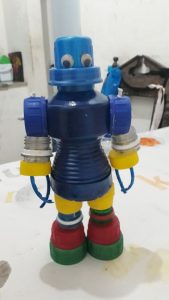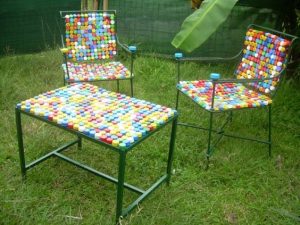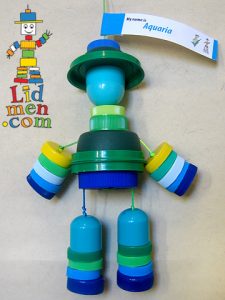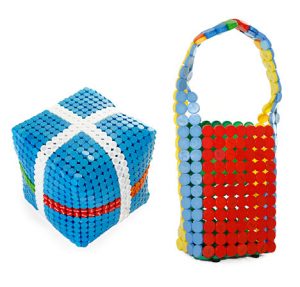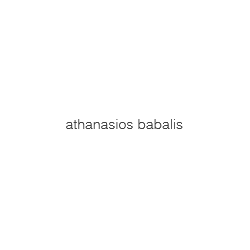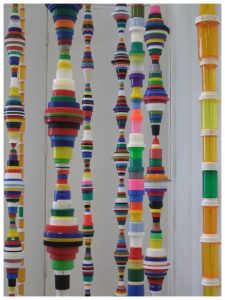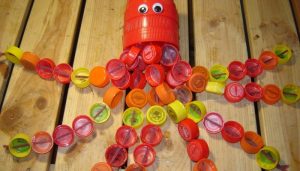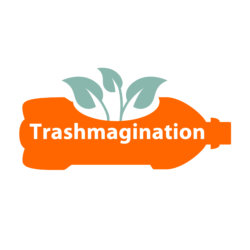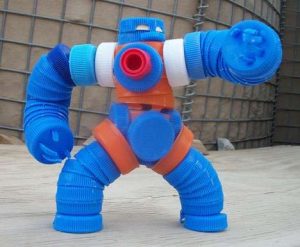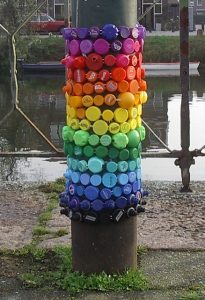Plastic closures for the top opening of a plastic bottle commonly made from PE (HDPE #2) or PP (#5). Caps for plastic bottles are often made of a different type of plastic from the bottle.
Plastic caps may have a pour spout. A “sports cap”, which appears on many water bottles, allows water to pass around the central blue piece. A cap is sometimes colourfully decorated with the logo of the brand of contents.
Common screw closures (from left to right): Plastic bottle with plastic screw cap, Dispensing closure for salad dressing (with inner seal), Break-away closure for syrup, Dispensing pump closure, Dispensing closure (with inner seal), Spray pump, Metal closure on glass jar, Child resistant closure, Cap on toothpaste, Measuring cap
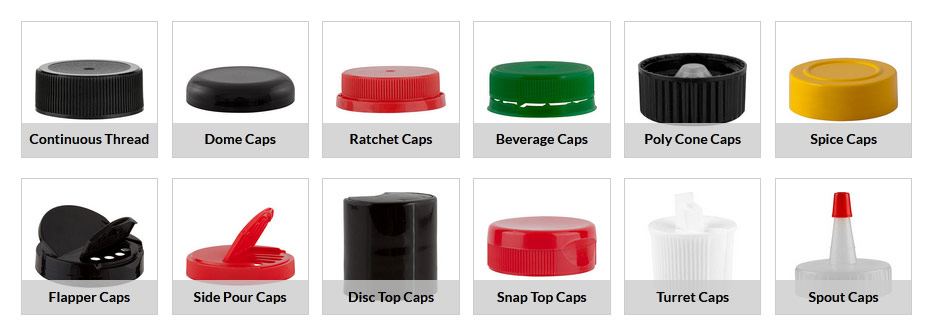
- PET bottles (fizzy drinks and water) often have lids made of the harder PP #5
- HDPE plastic milk bottles usually have HDPE #2 lids (this is the case in the UK) (is is soft to drill)
- Beverage cartons made from LPB (card/aluminium/plastic) usually have HDPE lids
- Others types such as prescription bottles could be Polystyrene #6
Closure linings
Foamed polyethylene (F217) is a material commonly used with plastic screw caps. F-217 is a soft polyethylene foam core covered on top and bottom with solid, clear polyethylene supplied in 0.050-inch thickness. F217 has become the industry standard due to its all-purpose compatibility, resilient, compressible seal, cleanliness (no pulp dust) and economy. F217 liners have excellent chemical resistance and a low moisture transmission rate. F217 has good taste and odor resistance.
Other liners inlude: heat induction liners, pressure sensitive liners, heat induction liners for HDPE, PET, or PET & PVC plastics, foil liners, pulp & poly-vinyl (PV) liners, foam liners, and more.
Sources






